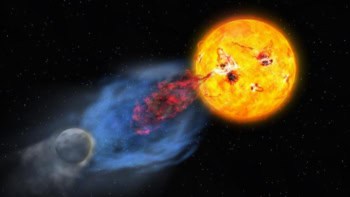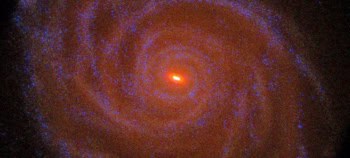
By Tushna Commissariat
Scientists and laypeople the world over were intrigued by the announcement made by the BICEP2 collaboration earlier last month, when it claimed to have detected the primordial “B-mode polarization” of the cosmic microwave signal (CMB). Many researchers have hailed it as the first evidence for cosmic inflation – the extremely rapid expansion that cosmologists believe our universe underwent a mere 10–35 s after the Big Bang.
Indeed, after a quick search of the arXiv preprint server, I found nearly 172 papers based on the BICEP2 data that have been written since the team’s announcement on 17 March. Some 200 individual citations to the original BICEP2 paper can also be found on the server.
Today, we came across the first two papers published in Physical Review Letters that are based on BICEP2’s data. Their publication is surprising, as the original BICEP2 paper, containing the data, has not yet been published in a peer-reviewed journal. Both papers look at the implications of BICEP2’s claims about string theory or vice versa. In one of the papers, Adam Moss from the University of Nottingham in the UK, along with Levon Pogosian from Simon Fraser University in Canada, asks whether BICEP2 has seen “vector modes” and looks at the constrains that could be placed on “properties of a wide range of different types of cosmic strings networks”.
In the other paper, Andrew Liddle from the UK’s University of Edinburgh, along with an international group of colleagues, claims that the “B-mode polarization signal detected at low multipoles by BICEP2 cannot be entirely due to topological defects” and also says that adding in some topological effects may help the BICEP2 data better fit the other CMB data and so bring the tensor to scalar ratio “r” down from 0.2 to 0.15.
Undoubtedly, these will be the first of many papers based on BICEP2’s results, whether or not the experiments claims are confirmed.



